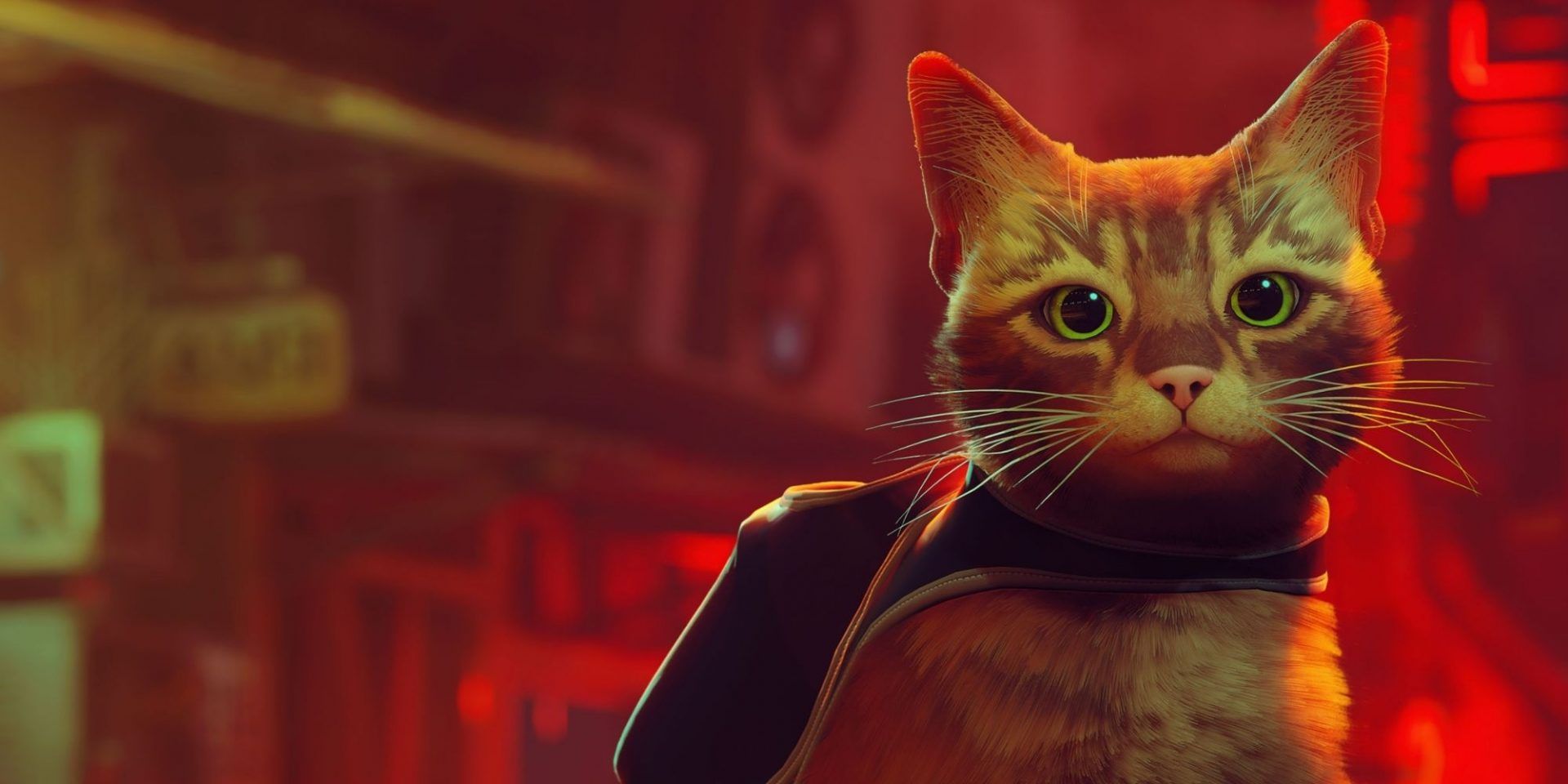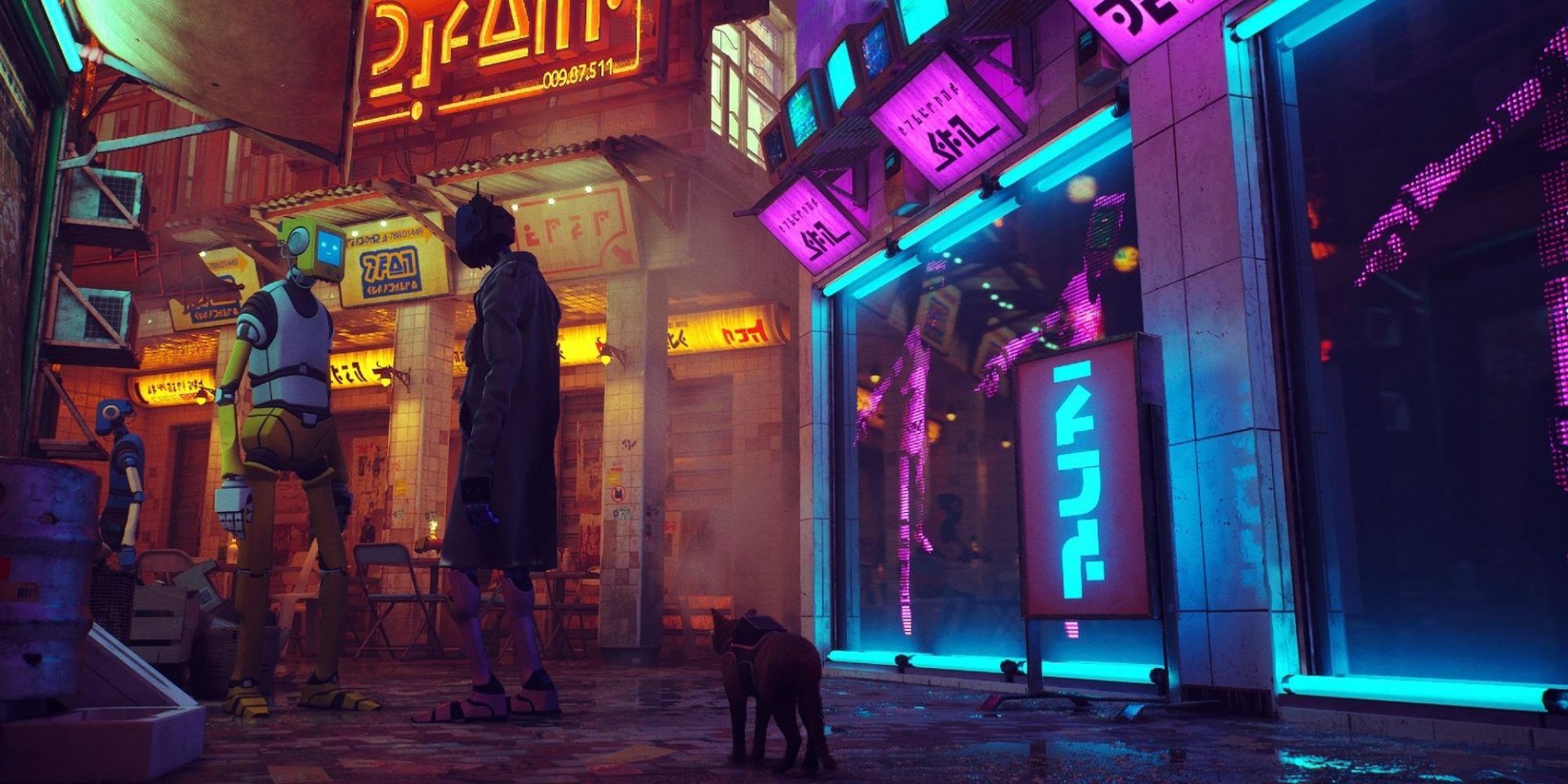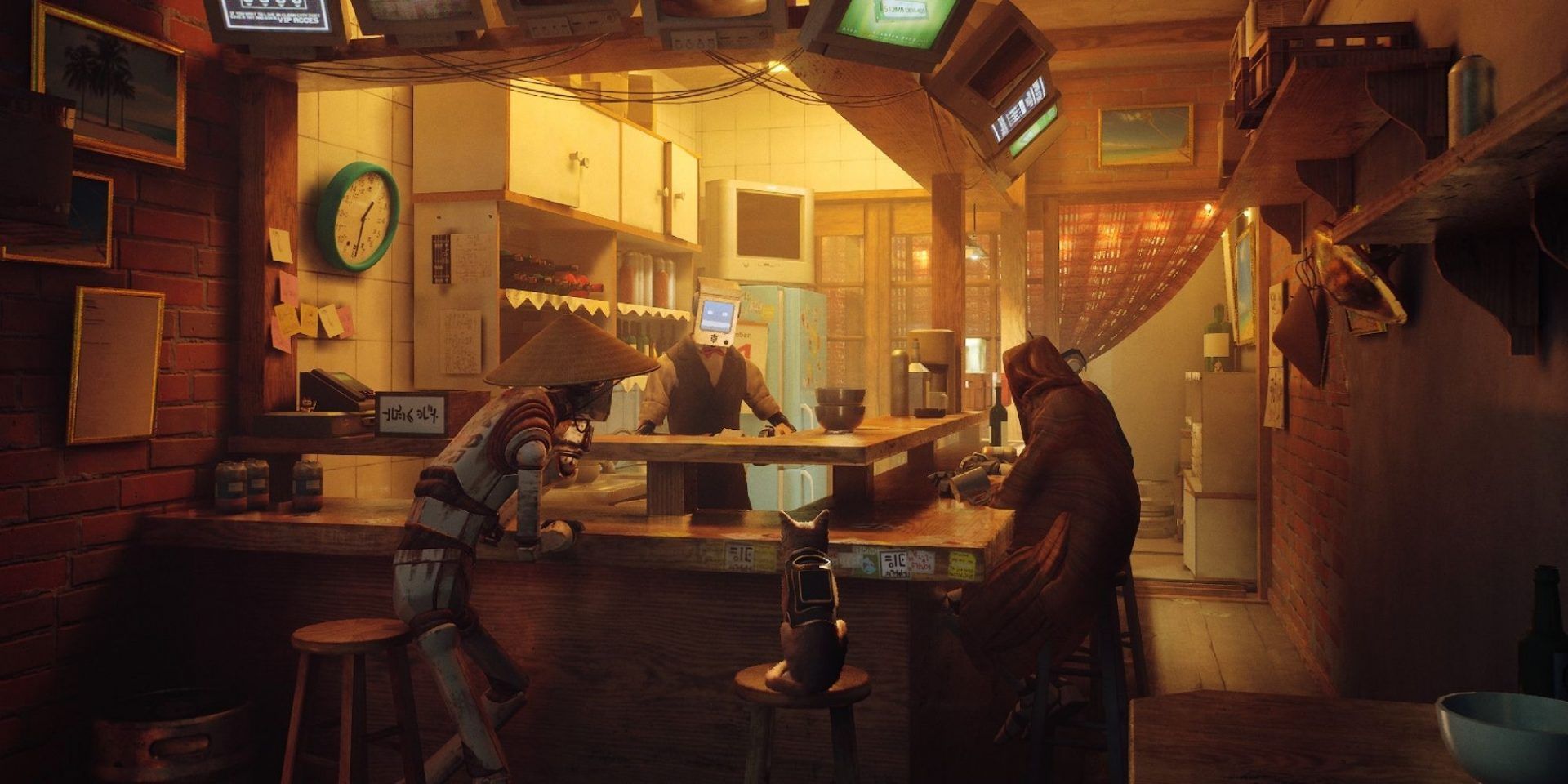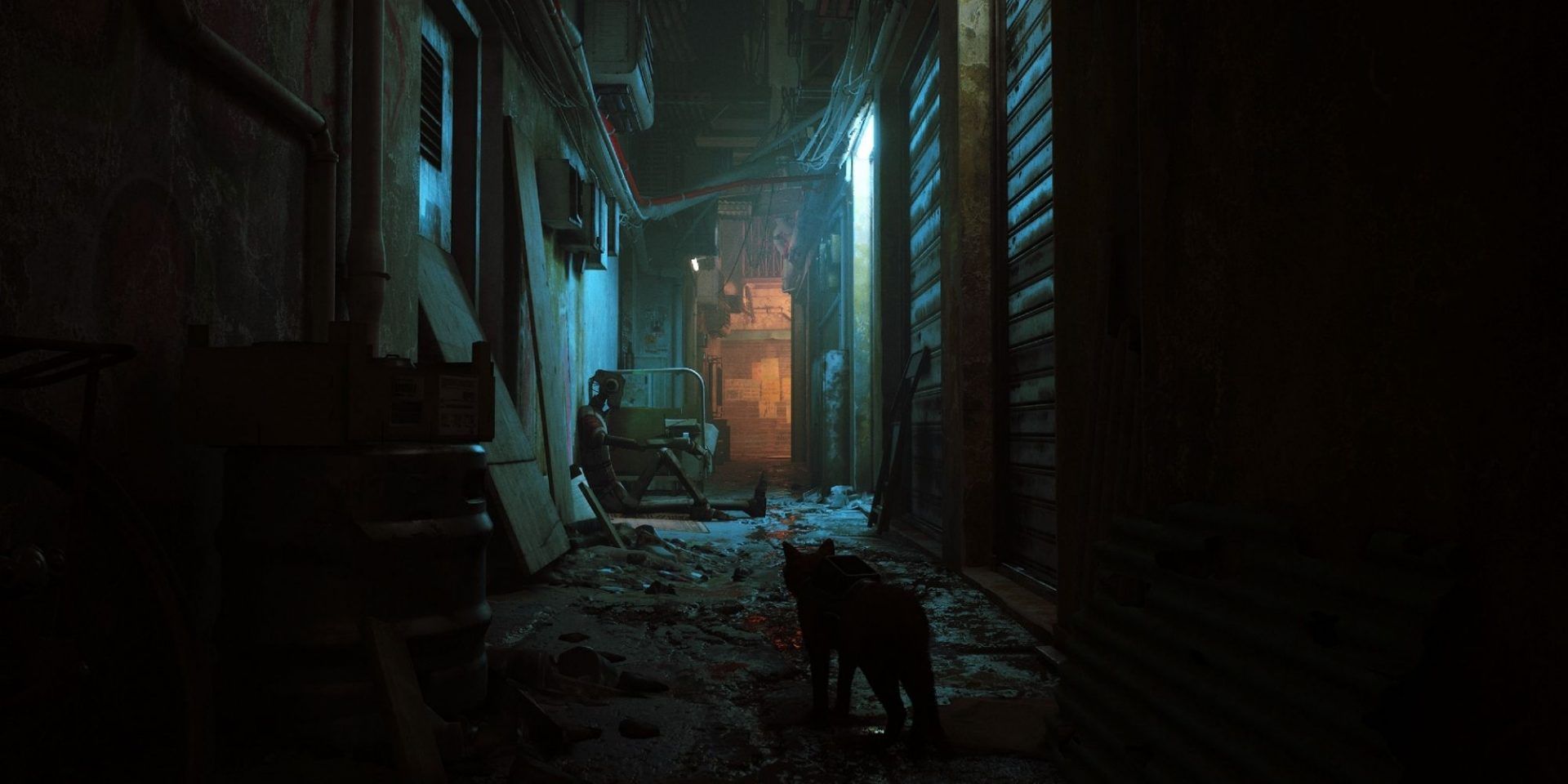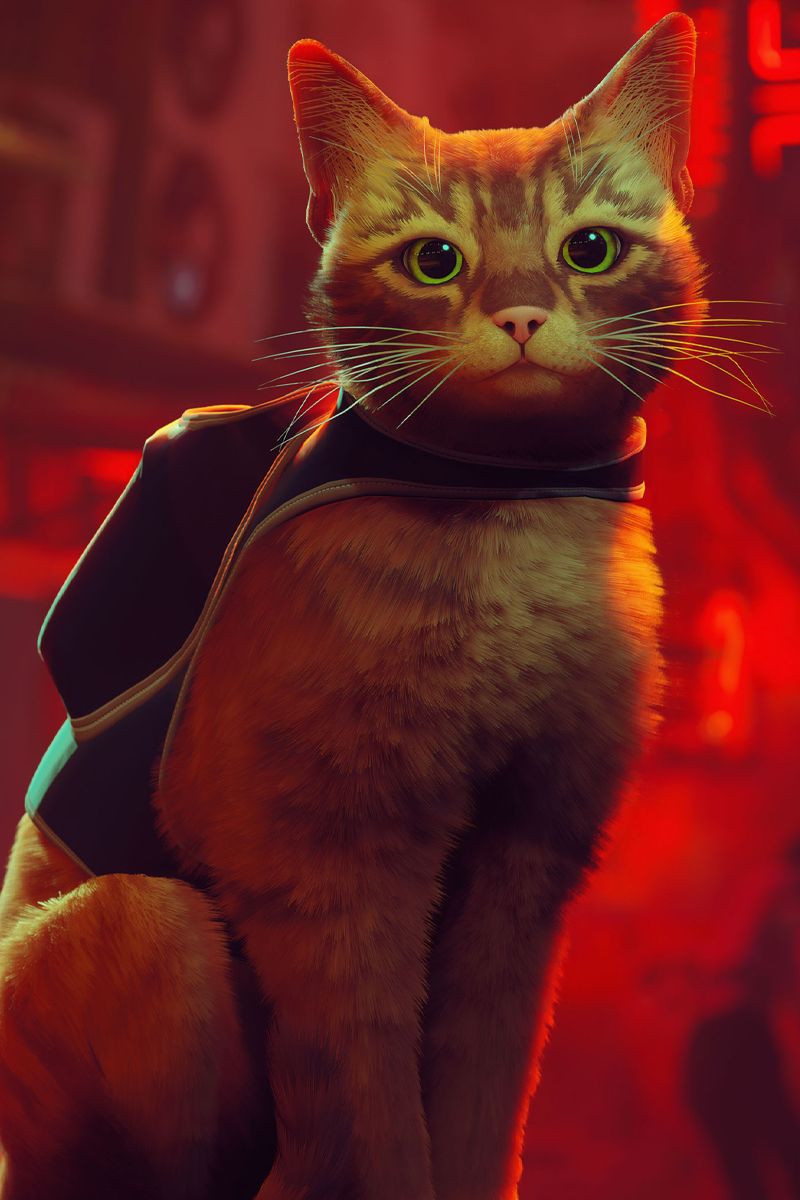|
Our Score |
5 / 10 |
|
The Good |
Captures the cat experience perfectly |
|
The Bad |
Lacks depth, boring platforming mechanics and dull gameplay loops |
|
Release Date |
19 July |
|
Developed By |
BlueTwelve |
|
Available On |
PlayStation 4, PlayStation 5, PC |
|
Reviewed On |
PC |
There’s no denying that the titular cat in Stray is cute. Unfortunately for developer BlueTwelve and publishers Annapurna Interactive, a handsome feline by itself isn’t enough to make an engaging video game. If you only want to play as a cat then Stray could be the game for you. However, if your gaming experience requires more than that, then there’s a discussion to be had on whether you should be picking up Stray.
At its core, Stray is a platforming adventure game with some very basic puzzle elements. Upon starting the game, you will be immediately struck by how cat-like your protagonist really is. BlueTwelve nailed their adaptation of a modern-day domestic cat. The meow sounds, the movement, the mischievous pawing of objects off edges and the door scratching, all of these actions will be instantly familiar to cat owners.
However, more negatively, Stray just isn’t that fun. After the novelty of playing as a cat wears off, Stray becomes an empty experience as the plot elements and gameplay mechanics aren’t very engaging.
One of the biggest flaws of Stray’s gameplay is its platforming system. In Stray, you can jump to pre-determined locations using the interaction button. There is no free-platforming mechanics in Stray, if you don’t have a prompt then you can’t jump at all. This is very restrictive game design and takes some of the joy out of playing as a cat. While the game is clearly designed around this platforming system, giving the player many potential jump options at once, mashing one button constantly is a poor substitute for actual platforming mechanics. A lot of the time, I found myself not even looking for button prompts but instead just mashing the button without even taking the time to adjust the camera until the cat arrived at its destination.
What’s so frustrating about this design choice is that these platforming mechanics are essentially the entire gameplay loop. Besides the platforming, the game only has very basic puzzle elements and a mediocre narrative to stand on.
By basic puzzle elements, I mean very basic. Like “meow to attract enemies to one side of a gap and then jump over the gap” basic. This isn’t necessarily a negative, not everyone wants to spend a long time figuring out complicated puzzles to progress in the plot, especially not in a game like Stray which is intended to be a more casual experience. But the point is, that the very mild puzzle elements are not a selling point.
An actual problem is the lack of variety in the types of puzzles you’ll face. The player will become intimately familiar with the limited puzzle mechanics Stray has to offer. You’ll be solving the same puzzle multiple times throughout the game, just in different locations.
The narrative isn’t very engaging for a number of reasons. Near the beginning of the game, the titular stray activates a drone-like companion called B-12. As the cat can’t communicate effectively, B-12 acts as the intermediary between the player and the primarily robotic characters they come across. B-12 is the linchpin of Stray’s plot, it gradually regains memories of its past life over the course of the plot and guides the cat from objective to objective.
Herein lies one of the problems with Stray’s narrative. You don’t form any emotional connection to any of the characters you encounter. It feels reductive to simply blame this on the player being a cat. A lack of voice acting doesn’t make a game’s narrative weaker inherently, there’s been plenty of very engaging and moving games without voice acting. In fact, a lack of voice acting can be a strength in some cases as it stops developers from having to limit the number of dialogue options available. But for Stray, with no voice acting and also no dialogue options, the narrative suffers as a result.
The equivalent of dialogue options in Stray is showing the robots different items in order to elicit a different response. However, if it’s not the specific robot the item is intended for then a lot of the dialogue ends up being the same. The first item you obtain, a postcard, has a lot of different dialogue attached to it but this doesn’t hold true for the remainder of the game. Additionally, it always feels like you’re being talked at rather than participating, which, while accurate to the feline experience doesn’t make you feel very immersed in the world.
Stray has a lot of characters, but well over 95 per cent of them are completely forgettable. You can meet a lot of robots but most of them aren’t interesting nor do they serve any purpose. This feels like an intentional design choice to artificially make the world feel bigger. While fine in theory, when even the semi-important characters lack substance it has the consequence of making everyone feel like filler.
Choosing robots as the inhabitants of Stray’s world is an intriguing choice and there are certainly some interesting narrative implications like how they appear to be mimicking humans despite their synthetic nature. However, this narrative choice appears to have backfired in Stray as while society in the narrative is intentionally void of personality, it also makes character interactions forgettable because the characters aren’t emotionally-charged or relatable.
A lack of immersion isn’t the only issue facing the game’s narrative, Stray is very on rails. The cat is being directed from the very beginning of the game. That’s not to say there aren’t any explorable areas, the early-game Slums and late-game Midtown offer a level of open exploration but ultimately feel empty. In the Slums, for example, the accessible buildings tend to all serve a plot purpose which has the effect of making the world feel smaller and less organic. If every building I enter has an arbitrary plot collectible in it then I feel like I’m being guided from location to location rather than exploring of my own free will.
Stray is a shorter experience. Any player could finish Stray in less than five hours. The game itself acknowledges its length as there is an achievement available for finishing Stray in under two hours, which is very achievable on a second playthrough. I personally don’t consider a game being shorter as an inherent negative, price depending. You may be surprised with how short Stray is while playing but it serves its purpose, Stray doesn’t have anything else to give by its conclusion.
While this review has highlighted the game’s negatives, it’s not all bad with Stray. The game runs well, is visually appealing and it’s not so dull that you’ll want to stop playing before reaching its timely conclusion. The game has a really solid base, some of the design choices like the platforming are questionable but others like the puzzling just need more fleshing out.
While playing Stray you can’t help but feeling if some things went differently during the development process then it could have been a great game. Unfortunately, while Stray captures the cat experience very well, it doesn’t score well on any of its core gameplay loops. While fine for a casual experience and not long enough to become annoyingly repetitive, Stray ultimately doesn’t stand on its own four paws as an engaging video game experience.

